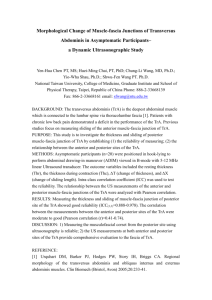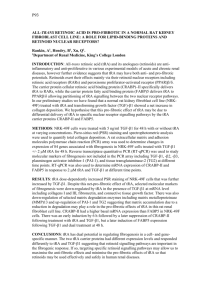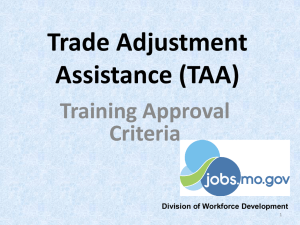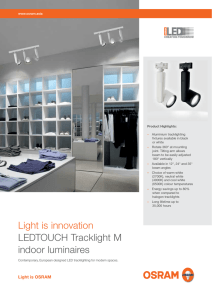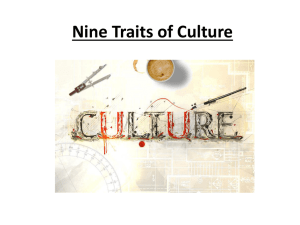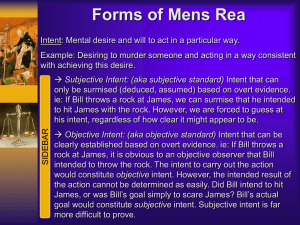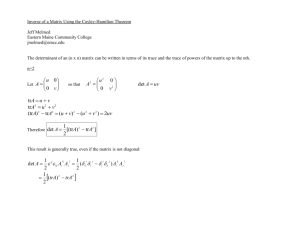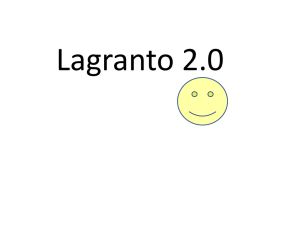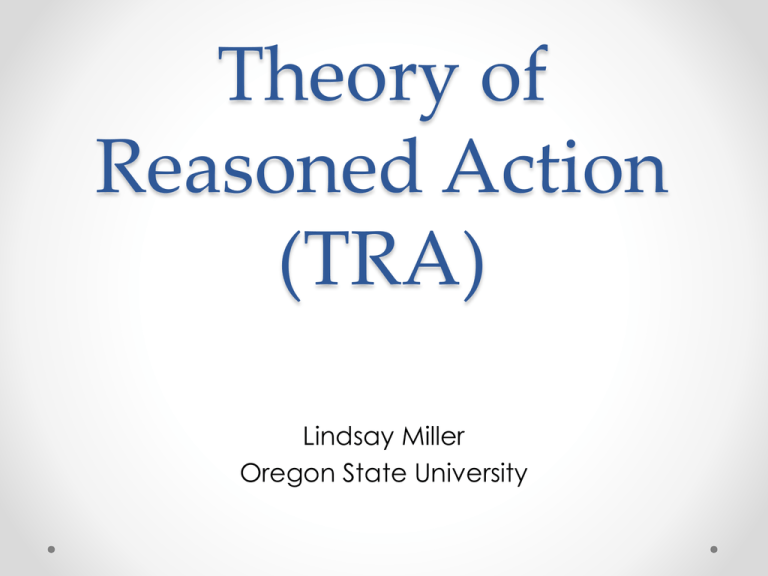
Theory of
Reasoned Action
(TRA)
Lindsay Miller
Oregon State University
Outline
• Brief discussion of Value-expectancy
theory
• Overview of the Theory of Reasoned
Action
• George’s example from book
• Personal example that YOU will help me
walk through
• Short quiz of TRA
• Relationship between TRA and TTI
Value-expectancy
• TRA has value-expectancy
•
Explains, “how individuals make health-behavior decisions in terms of
their expectations or beliefs regarding the health behavior and the
value attached to the behavioral health outcome”
• Theory of Planned Behavior
• The Information-Motivation-Behavioral Skills
Model
Theory of Reasoned Action
(TRA) Overview
• TRA was developed by Ajzen and
Fishbein 1980
• 2 focuses (constructs)
o Beliefs about HBs will shape behavioral intent Attitude
o Social influences will shape behavioral intent Subjective
Norm
TRA Overview
• Construct 1:
o Attitude: A person’s evaluation of the anticipated positive or
negative outcomes associated with engaging in a given
behavior.
o Consider belief about behavior and evaluate that behavior as
good or bad.
o 7 point scale: -3 to +3
o Create attitude about behavior
TRA Overview
• Construct 2:
o Subjective Norm: The idea that people are motivated by their
perceptions of what is considered normative and acceptable by
others
o Normative belief: The perceptions that an individual has about
what others think they should do in regards to the said behavior.
o Weigh each normative belief by a person’s motivation to comply
with the referent (source of the normative belief)
o 7 point scale: 1-7
o Create Subjective Norm
TRA Overview
• Behavioral Intent:
o Key construct in TRA and the last step before the actual behavior
o Defined very specifically as,
1. Time frame for performance of the behavior
2. And exact description of the action composing the behavior
3. The desired outcome (target) of the behavior,
4. The context of the behavior
o Example: “intent to use condoms for STD prevention (target) in
the next 6 months (time) for every act of penile-vaginal sex
(action) with people other than your primary sex partner
(context).
TRA Diagram
George Example from Text
• George wants to lower cholesterol
levels
• Considers few options
o Diet change
o Exercise
o Take cholesterol-lowering drugs
• Doc suggests changing diet
George Example – Construct 1
• Belief about becoming a
vegetarian
o May have difficult time finding enough
food
• Evaluate his belief
o Good versus bad
o 7 point scale: -3 to +3
o Not finding enough food (-3)
• Create attitude about behavior
George Example Construct 2
• People are motivated by their perceptions
of what is considered normative and
acceptable to others.
• Each normative belief is “weighted” by a
persons motivation to comply with referent
source
o 7 point scale (1-7)
• Georges doctor believes he should take
cholesterol-lowering drugs
Behavioral Intent
• Last step in the theory before the actual behavior
• Intent includes
o
o
o
o
Time frame for performance
The action composing the behavior
Desired outcome (target)
The context of behavior
Behavioral Intent
Specifics of Health Behavior for George
Action
Target
Context
Time
Get
Prescription for
Lipitor
Internist Office
Next 2 months
Use
Fresh Vegetables
In meals cooked
at home
Always
Take
Lipitor
Unspecified
Daily
Order
A salad
Eating out
Always
Example: George intends to always (time)
order (action) a salad (target) when eating
out at a restaurant (context).
Example – Prehypertension
• I go to the doctor, and I am diagnosed with
prehypertension (Systolic of 120-139mmHg)
• Doc suggests I reduce my alcohol
consumption.
• What is the first construct in TRA?
• Create a belief about reducing alcohol
o Difficult to not be in a situation with alcohol
o Rate low, -2
• I have a negative attitude about reducing
my alcohol consumption
Example - Prehypertension
• Construct 2?
• Create normative believes and “weigh” them by
my motivation to comply with the referent source.
o My sorority sisters would NOT want me to reduce my alcohol consumption
(+5)
o My doctor would want me to reduce my ETOH (+3)
• Arrive at Subjective Norm
• Next Step?
Example - Prehypertension
• Behavioral Intention
o
o
o
o
Time frame
Action
Target
Context
Action
Target
Context
Time
Drink
Alcohol
At School
Graduate
Use
Low sodium
foods
In meals cooked Always
at home
Smoking – TRA Quiz
1.
2.
Your cousin Norm does not think you should quit (+3).
1.
Subjective Norm
Quitting smoking will save you money. You are a college student
with loans.
1.
1.
Beliefs about the behavior and evaluations of that behavior
Your cousin Norm has smoked his entire life and has no health
problems. Norm is your best friend, and you trust him.
1.
2.
Normative belief and motivation to comply
Quitting smoking will help you save money to pay your college loans
(+3)
1.
I
Attitude about belief
2
4
3
1
TRA and TTI
Summary
References
• DiClimente, R., & Salazar, L. (2013). Health Behavior
Theory for Public Health: Principles, foundations, and
applications. Burlington, MA: Jones and Barlett
Learning.
• Preventing High Blood Pressure: Healthy Living
Habits. (2014, July 7). Retrieved October 8, 2014.


